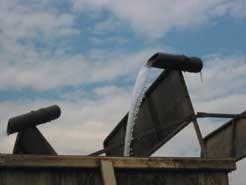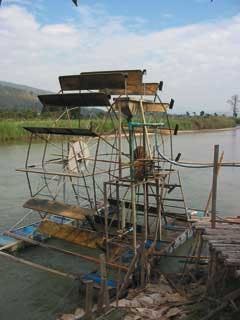Solar-powered purifiers deliver huge savings and safe water
By Ken Bird
A portable solar-powered water purification system from the UK company SolarGen Solutions Ltd reduced the incidence of water-related illnesses and delivered huge savings by eliminating the need to purchase pre-bottled water at the Maekok River Village Resort Initiative (MRVR) project in Chaing Mai, Thailand.
The system integrates energy from the sun and an innovative filtration system into one self-contained unit, which is now permanently installed. The MRVR Initiative is a tourist resort that also educates students on organic farming methods and hotel procedures.
Access to clean water is difficult due to the effects of large-scale deforestation, extensive use of river and groundwater for irrigation and excessive use of fertilizers and pesticides in the region. The water comes from the Mae Kok River, originating in Myanmar with its headwaters about 50 km upstream; however its high sediment yield and raw sewage content obviously reduces water quality. The rapidly increasing population is worsening water quality as untreated sewage is disposed into the river.
The solar-powered system helps combat these problems in a practical way given the remote location of the village. By using one small self-sufficient unit, the Initiative has overcome these obstacles and improved access to clean, potable water, while avoiding the expense of ongoing maintenance and cabling costs to generate a suitable electricity supply.
The purifier is installed halfway up a frame which "houses" a climbing wall and various "assault" courses, forming part of the Initiatives outdoor activities centre. A water tank is situated at the top of the wall, feeding water under gravity into the purifier. From here, it then exits to a tank at the base of the climbing wall.
The river flows past the resort and water is extracted by means of a water wheel - a steel frame, with bamboo pots to catch the water. Pipes, approximately 100 metres in length, transfer water to an irrigation canal surrounding an organic farm, which is pumped up to the main tank above the SolarGen purifier.
Two photovoltaic panels, each one square metre in size, power the water purifier. The panels can be placed on top of the case during use and folded in two for easy storage or transit. Together, the panels are capable of generating 17.8 volts of electricity to charge the built-in battery, producing enough power to keep the purifier working continuously for eight hours. The PV requirement has been calculated to the specific needs of the application, taking into account sunlight levels (isolation values) from the given area and daily consumption of electrical load.
The real benefit of a built-in battery is that although the sun shines most of the year in areas like Chaing Mai, electricity generated is stored by the battery for use during hours of darkness, thereby not limiting the use of the water purifier to daylight hours.
It uses a three-stage filtration process with an integral inlet and outlet pipe. The process starts by cleaning water by means of a sediment filter to remove any deposits or suspended debris. It is then channelled through a carbon block filter to remove pesticides, fertilizers, other chemical contaminants, odours, chlorine and bad tastes. From here, the water moves past a built-in ultraviolet light, which acts as a disinfectant to kill all known pathogens that cause diseases such as such E-coli, salmonella and cholera. The entire process requires no chemicals and the cycle from water-in to water-out takes less than one minutes to produce two gallons of potable water.
One switch starts the procedure, automatically starting the built-in pump. With so few moving parts, very little can malfunction, which keeps operating costs extremely low. Removable filtration cartridges makes cleaning and reusing cartridges easy and further savings are made as the UV bulbs have a life expectancy of more than one year. The overall design has been purposely kept simple to minimise maintenance and operating costs and allow for people with little or no experience to operate the system.
The water purifier produces in excess of 200 litres of clean water each day - well within the capacity of the purifier.
Recently, a number of national and regional social institutions as well as commercial organisations visited MRVR to witness the equipment in operation, and are considering using the purifier to meet their specific requirements for clean water.
Future developments for MRVR might include using excess electricity produced by the purifier to power other equipment in the resort requiring an external electricity source.
Author's NoteKen Bird is chief executive of SolarGen Solutions Ltd, located in Gwent, South Wales, UK. For more information, visit the website at www.solargen.biz.


